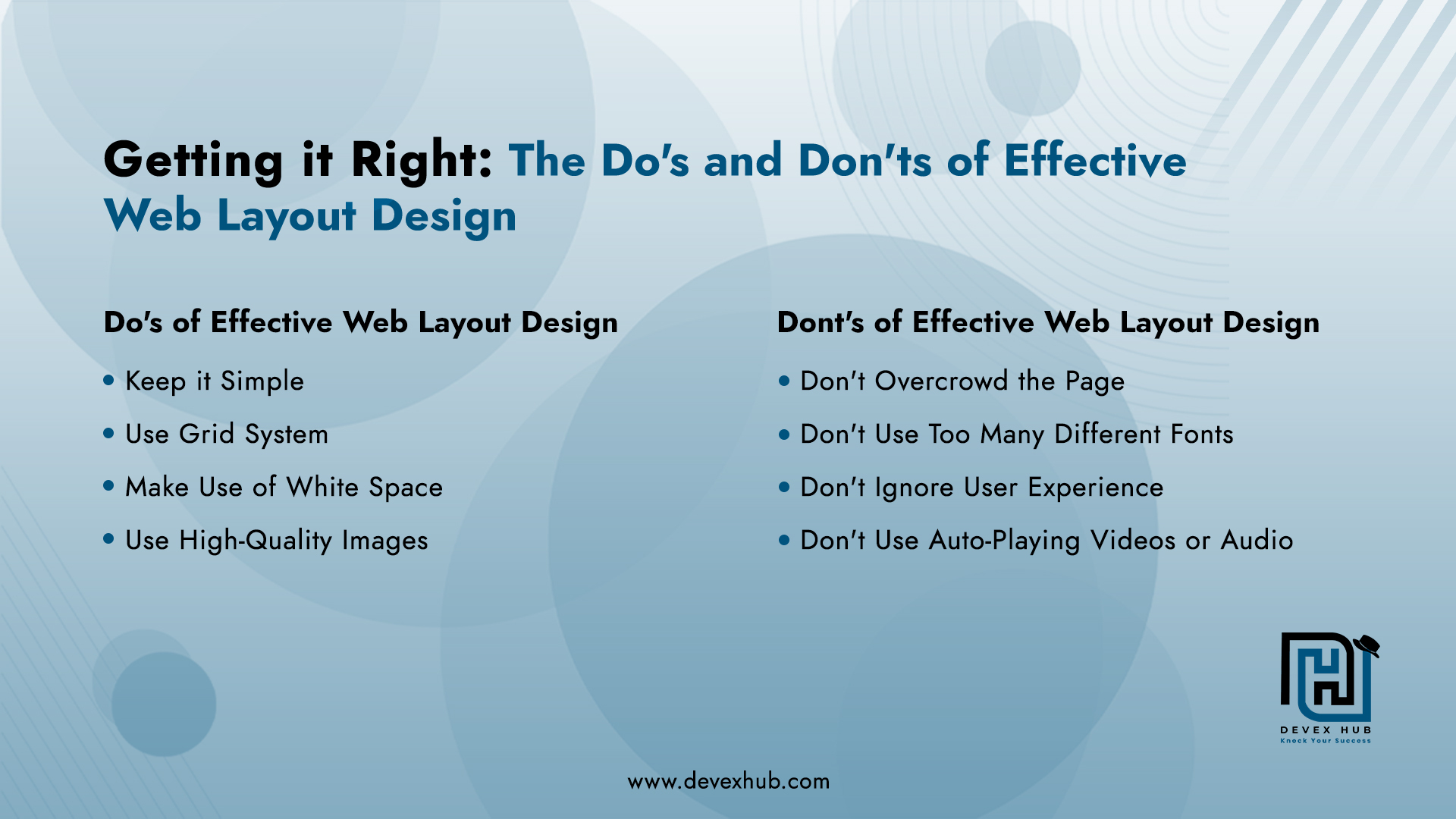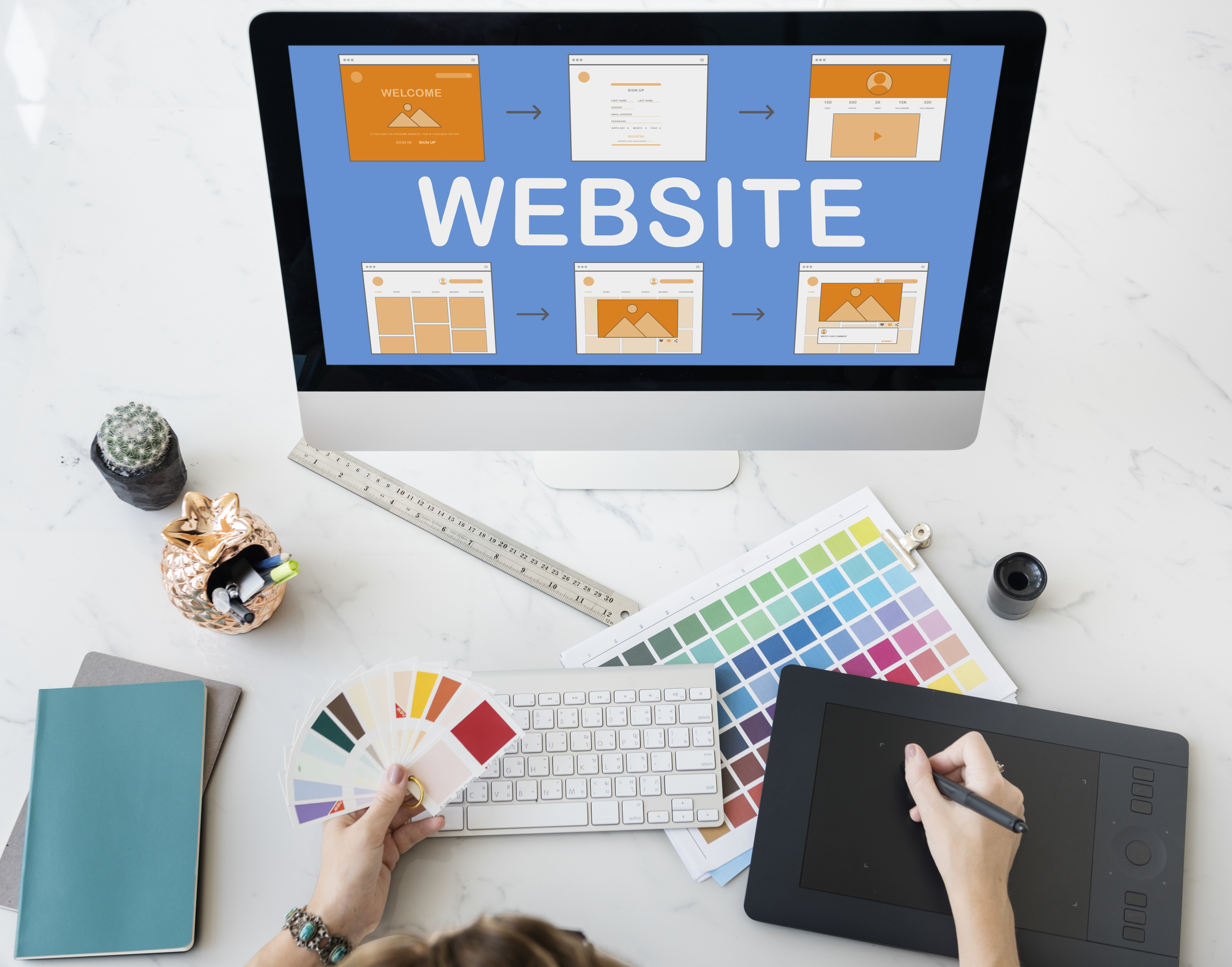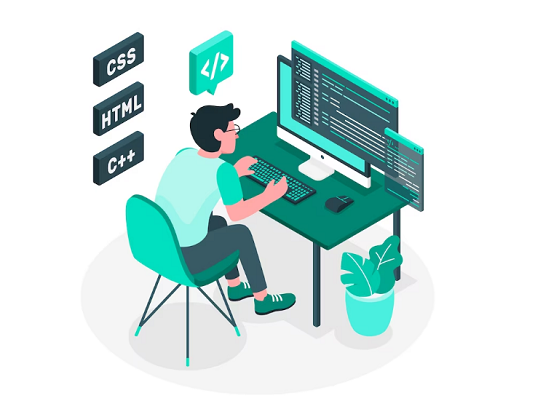Getting it Right: The Do's and Don'ts of Effective Web Layout Design

Picture this - you visit a website with a confusing layout, poor readability, and non-responsive design. How long do you think you will stay on that site? Not long, right? The layout of a website is often the deciding factor in whether visitors stick around or leave within seconds. That's why effective web layout design is crucial for the success of any website. In this blog, we're diving deep into the do's and don'ts of web design, to help you create a website that engages and informs your visitors, keeping them hooked and coming back for more.
From the power of simplicity to the impact of responsive design, we'll cover all the key elements you need to consider to get your web layout right. In this blog, we will be discussing the "do's and don'ts" of effective web layout design, to help you create a website that serves your users and meets your goals.
Do's of Effective Web Layout Design
Keep it Simple
To build a good website design, a simple layout is essential for an effective web design. When a layout is cluttered and filled with too many elements, it can be overwhelming for users and cause them to lose focus on the content. A simple layout, on the other hand, allows users to easily navigate the site and find what they're looking for without being distracted by unnecessary elements.
Use Grid System
Grid systems are an essential aspect of effective web layout design. A grid is a visual structure that divides the page into columns and rows, providing a framework for placing elements on the page. Using a grid system helps to create a consistent and organized layout that is easy to navigate. Grids are used to align elements horizontally and vertically, which is essential for creating a harmonious and balanced layout. They are used to determine the size and placement of elements on the page, such as headings, text, images, and buttons.
Make Use of White Space
White space, also known as negative space, is the unused space on a web page that surrounds the content. The use of white space is a crucial aspect of effective web layout design because it can help to create visual interest, improve readability, and draw the user's attention to specific elements. By using larger amounts of white space around the most important elements, you can make them stand out and draw the user's attention to them. This can be especially useful for highlighting calls to action, such as buttons or links, and making them more prominent.
Use High-Quality Images
Using high-quality images in your web layout can have a significant impact on the overall look and feel of your site. Not only do they add visual interest, but they can also help break up sections of text and make your site more engaging for users. When choosing images for your layout, it's important to select images that are relevant to the content on your page and that are of high quality. Low-quality images can detract from the overall look of your site and make it seem unprofessional.
Be Consistent
Consistency is key aspect in website design checklist, and it helps to establish a strong visual identity for your site. By using the same font, color scheme, and design elements throughout your site, you create a sense of unity and professionalism that visitors will recognize and appreciate.
Consistency also helps to make your site easier to navigate. If visitors know what to expect from one page to the next, they are more likely to stay on your site and find the information they need. This is particularly important for e-commerce sites, where consistency is essential for creating
Dont's of Effective Web Layout Design
Don't Overcrowd the Page
An overcrowded page can be a major turn-off for users, causing them to leave your site in search of a better experience. When there's too much information on a page, it can become difficult for the user to identify the important elements and find what they're looking for. This can lead to frustration and confusion, and can ultimately harm the user's experience on your site.
Don't Use Too Many Different Fonts
Using too many different fonts on a single website can make the design appear cluttered and unprofessional. It's important to choose a limited number of fonts and use them consistently throughout the site to create a cohesive look and feel.
Sticking to a limited number of fonts allows you to establish a visual hierarchy and make it easier for users to navigate the site. For example, you can use one font for headings, another for subheadings, and a third for body text. By using a limited number of fonts consistently, you can create a strong visual identity for your site that is easy for users to recognize and understand.
Don't Ignore User Experience
According to the web design accessibility standards user experience (UX) is a critical aspect of web design and should not be overlooked. A good user experience will keep visitors engaged and help to improve the overall effectiveness of your website. Your layout should be designed with the user in mind, providing a clear and intuitive navigation structure and placing the most important content "above the fold."
Don't Use Auto-Playing Videos or Audio
Auto-playing videos or audio can be incredibly disruptive to the user experience, as they often start playing as soon as the page loads, without the user's explicit permission. This can be particularly problematic in situations where the user is in a quiet environment, or if the audio or video is particularly loud or distracting. In addition to being disruptive, auto-playing videos or audio can also make it difficult for users to find the content they're looking for. To ensure a positive user experience, it's best to avoid auto-playing videos or audio altogether. Instead, consider using a play button or other explicit call to action that the user can choose to activate if they want to hear or watch the audio or video.
Summary
In conclusion, effective web layout design is a critical aspect of creating a successful and user-friendly website. By following the web design standards and best practices you can ensure that your website stands out and provides an enjoyable user experience. So, if you are ready to take your web layout design to the next level, contact Devex Hub today. Our team of experienced designers and developers can help you create a website that not only looks great but also delivers results. Don't miss this opportunity to take your online presence to the next level. Contact us today!



.jpg)

Comments
Post a Comment